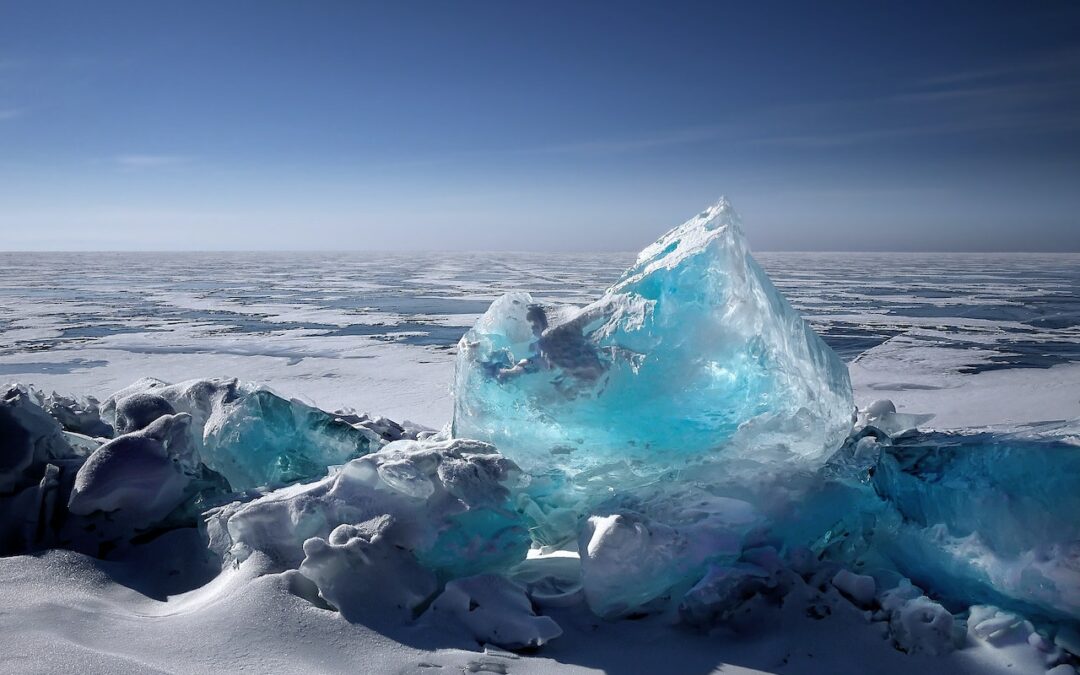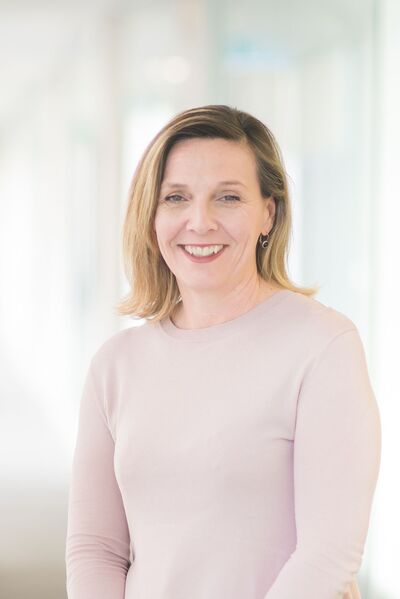
by Komoneed | Oct 16, 2023
Leveraging Social and Behavior Change Communication (SBCC) Campaigns for Climate Action
jschoshinski
Tue, 10/10/2023 – 17:23
Addressing the impacts of climate change is as much of a local issue as it is a global issue. Individual behaviors play a vital role in shifting the mindset of the general population towards adopting behaviors that can sustainably and indefinitely limit global warming. Implementing social and behavior change communication (SBCC) campaigns can change behaviors, perceptions, attitudes, and beliefs on a range of issues like environmentally friendly practices, clean energy development, and investing in natural resources. It is a tool that can help advance and sustain climate adaptation and mitigation efforts.
During the “Communicating Urgency: Social and Behavior Change in the Era of Climate Change” webinar (full video), hosted by Springboard in September, I spoke about RTI’s efforts supporting USAID-funded SBCC campaigns aimed at influencing public perceptions to reduce greenhouse gas (GHG) emissions and protect wildlife. RTI successfully implemented two social and behavioral change communication approaches in Guatemala and Southeast Asia that demonstrated how targeted communication campaigns can influence decision makers and direct a specific audience to shift behaviors that negatively impact conservation efforts.
Reducing greenhouse gas emissions in Guatemala
The USAID-funded Low Emission Development (LEDS) project worked with the Government of Guatemala to create the country’s first low emission development strategy. Since its launch in 2019, this strategy has been one of the cornerstones of Guatemala’s climate mitigation planning, helping to bridge long-term climate goals with economic growth objectives.
Image
Various examples of Guatemala’s low emission development strategy report
Credit: RTI International
LEDS launched an SBCC campaign to highlight the benefits of low emissions at events like trade fairs, government events, and on the radio. It engaged with local stakeholders to understand their perspectives on climate change and to create messages that would resonate with them. The goal was to influence public perception across the general population to support low emission policies, decrease Guatemala’s carbon footprint, and to support counterparts in government, private business, and civil society to strengthen the effectiveness of their own climate-related communications and social engagement strategies.
Guatemalan SBCC campaign results
As a result, LEDS worked with eight government ministries and over 25 businesses to generate evidence and communicate the benefits of climate change mitigation and low emission development, working across economic sectors such as agriculture, energy, transportation, forest management, and industry. Over 250 participants attended the public launch of the National Low Emission Development Strategy, which was recently used to updated Guatemala’s Nationally Determined Contribution under the Paris Agreement. Read more about the LEDS project and lessons from engaging the private sector in climate change planning.
Using SBCC campaigns to protect wildlife in Thailand
The connection between wildlife and climate change is not always apparent, but wildlife trafficking and the illegal trade of natural resources can undermine climate change adaptation efforts and cost countries millions, in addition to threatening national security and an economy’s stability and growth.
Many communities, particularly those that are marginalized, rely on the biodiversity of the ecosystems in which they live to increase their resilience to weather conditions such as severe drought or flooding. Nature-based solutions or landscape-based approaches to combat climate change increase biodiversity, promote sustainable land-use, protect animal populations, and support climate mitigation efforts.
To address these adverse effects, the USAID Wildlife Asia project, led by RTI, worked to reduce illegal trafficking of elephant ivory, rhino horn, tiger, and pangolin products in Southeast Asia. The project drew on the success that SBCC has had in the health sector and, for the first time, used social and behavior change communication for the purposes of biodiversity conservation. Through formative research, the project used a socio-ecological model, developed by the USAID Communication for Change project, and adapted to demand reduction to identify target audiences interested in or seeking out illegal animal parts and products to reduce consumer demand for these illegal products across China, Thailand, and Vietnam.
Decreasing the appeal of ivory
For example, in Thailand, the project used creative messaging to target current or potential consumers of ivory products through the Beautiful Without Ivory campaign. The campaign used fashion influencers and targeted ads to decrease the perceived beauty of ivory, which is one of the main reasons ivory is popular among Thais, especially urban, well-educated women over 20 years old.
Image
Beautiful Without Ivory Campaign messages. Credit: USAID Wildlife Asia
The campaign, which started in late 2019, ran three rounds of campaign ad placements in fashion magazines, social media, and billboards in malls and metro stations. The total estimated views of the campaigns were more than 20 million people. As a result, a survey showed that those who agreed with “Ivory helps make one feel beautiful” reduced from 67 percent in 2018 to 48 percent in 2020. When it came to changing behaviors, respondents who stated that they would buy ivory products in the future decreased from 79 percent in 2018 to 37 percent in 2020. The campaign received high saturation levels as well, with over one-third of survey respondents seeing campaign ads three or more times.
Ads target potential buyers of illegal animal products
The USAID Wildlife Asia project also ran a digital deterrence campaign in Thailand that used digital marketing to target people specifically searching for illegal animal parts and products online. Ads, like the ones below, appeared when sensitive keywords were used. The ads shared messages informing the interested buyer of the legal repercussions of purchasing these items. The ads were served to 560,670 searches and resulted in 17,410 clicks to the landing page. On social media, the ads were viewed over 8 million times.
Don’t buy bad luck
Image

by Komoneed | Oct 11, 2023
Wildfire smoke has reversed a quarter of air quality gains achieved under the federal Clean Water Act, according to a new study published in Nature. The Clean Air Act, first approved in 1972, targets particulate matter called PM2.5 that is

by Komoneed | Oct 11, 2023
With millions of tonnes of household and industrial plastics breaking down in landfill, rivers and the sea annually in Australia, Flinders University is leading research into how degrading plastic waste is progressively building up in local coastal areas and the Gulf St Vincent.
A study in the international journal Marine Pollution Bulletin uses microplastic density mapping — compiled over two years by experts at the South Australian Research and Development Institute (SARDI), the research arm of Primary Industries and Regions SA (PIRSA) — to raise concerns about rising microplastic particles in the Gulf.
Flinders University Professor of Biological Oceanography Sophie Leterme said compounding pollution issues will continue escalating in every part of the environment.
According to Leterme, there may be undiscovered accumulation areas with high densities of harmful microplastics in South Australian waters. These particles are increasingly finding their way into marine trophic webs and are ingested by organisms.
There are also concerns about humans consuming microplastics through contaminated food.
The researchers say the system developed to monitor and measure microplastic accumulation in local waters and freshwater streams can be adapted to local conditions.
SA’s marine economy was worth $2.3 billion in 2019, with the Gulf St Vincent (GSV) accounting for about half the value of production in marine industries.
Spencer Gulf and GSV are large semi-enclosed water bodies or inverse estuaries, meaning they become progressively saline as they go further inland. In GSV, the residual (non-tidal) currents are predominantly wind driven, making their conditions ideal for trapping plastic debris.
Leterme worked with Flinders University researchers Kyle Mitchell and Dr Jason Gascooke, as well as SARDI’s Dr Charles James, to develop the new model.
The model of the gulf currents was used to drive a simulation of microplastics originating from two coastal freshwater input sources, the Onkaparinga and Torrens rivers. The results were used to map forecasted microplastic pollution densities in Gulf St Vincent and identify potential microplastic accumulation zones.
The study also simulated the trajectories of microplastic particles that could enter marine park boundaries in the gulf.
Image credit: iStock.com/Uladzimir Zuyeu

by Komoneed | Oct 11, 2023
USAID Reducing Pollution project
jschoshinski
Fri, 10/06/2023 – 18:29

by Komoneed | Oct 11, 2023
They say the road to hell is paved with good intentions. And it’s increasingly looking like this might be the case with Australia’s goal of achieving 80% resource recovery by 2030.
It’s only a little over six short years away.
As it stands, resource recovery in Australia is at around 62% and remains stubbornly difficult to budge higher.
According to the latest National Waste Report, there has been an increase of only one million tonnes over the last two reporting years, whereas we need over 10 million additional tonnes recovered over the next seven years (excluding ash recovery).
Those numbers demonstrate the trend is not our friend.
Drastic action is required if we are to meet that target. It will require some urgent and decisive leadership.
But let’s first acknowledge some of the good work going on across the country.
Federal and State Environment Ministers recently agreed to take action on packaging, with design rules aimed at cutting waste and boosting recycling.
The introduction of mandated targets for recycled content is a crucial first step on the path to creating a level playing field between virgin and recycled materials.
To grow demand for the recyclate we produce as a country requires a strong domestic market to buy these materials back. It’s clear this can only be achieved through mandated targets. Two decades of voluntary targets have failed to do the job, so this move is to be welcomed.
As is the co-investment from various governments in waste and resource recovery facilities, such as the expanded Visy facility in Melbourne opened in July, which adds 95,000 tonnes of fibre-processing capacity to the sector and the Albury-Wodonga PET recycling plant opened in 2022 operated as a joint venture between Pact Group, Cleanaway Waste Management Ltd, Asahi Beverages and new partner Coca-Cola Europacific Partners, which recycles about 30,000 tonnes a year.
But we need more. Much more. And fast.
This is why we are calling for a national commitment to a streamlined planning process to enable quick and efficient delivery of more of these facilities.
The WARR (waste avoidance & resource recovery) sector doesn’t seek to cut corners — indeed, those planning processes are important to giving the community confidence in our facilities — but approval differs across the states, adding layers of complexity. Furthermore, there are examples of it taking up to seven years.
This simply isn’t good enough and acts as a barrier to investment for those companies that want to play their part.
There is a certain irony in green tape holding up investment in vital recycling and resource recovery infrastructure necessary to achieve our environmental targets.
The very rules that are meant to protect the environment are often holding us back.
It’s also why a national framework is necessary to ensure uniformity across Australia.
It’s no wonder people are confused when the definition of waste varies from jurisdiction to jurisdiction.
As Elizabeth Wild and Leon Batchelor point out in an article for the Australian Environmental Review, the definition of waste in Australia is unpredictable and lacking transparency across the states, which means the waste and resource recovery sector can be “poorly equipped to make operational and investment decisions which is adversely impacting the development of a circular economy”.
If we can’t even agree on what waste is, what hope do we have?
Europe has the ‘Green Deal’. The US has something similar as well as the Inflation Reduction Act, which wisely links environmental change to the economy.
It is this framework that everything needs to hang off. Instead, it seems like we are going the other way with a raft of siloed reviews and actions, then desperately hoping it will all fit together by 2030.
Well, sadly it’s not and it’s leaving massive holes. For example, the PFAS (per- and polyfluoroalkyl substances) consultation is looking into just three of the more than 4000 POPs (persistent organic pollutants).
The national framework would ensure the industry is considered in its entirety — not just papering over the last bad headline a government copped.
The good news is, there is a pathway forward. We can look to our friends in Europe and the US for inspiration.
The goodwill from the community is there, which should embolden governments to act.
There is time to start paving the road in a different direction and change tack, so we reach 80% by 2030, but that action needs to happen now and at a pace with which government to date appears unaccustomed.
Gayle Sloan is the Chief Executive Officer of the Waste Management and Resource Recovery Association of Australia (WMRR), Australias peak body for both the waste and resource recovery industry. Prior to becoming CEO in 2016, Gayle spent many years working for the NSW Attorney General’s Department before moving into the Attorney General’s Ministerial Office in 1998, and then the NSW Police Minister’s Office in 2000. Following this time in state government, Gayle worked as a director in a number of NSW councils, primarily looking after service delivery and assets. She developed and delivered a number of waste management contracts on behalf of councils, as well as managing environment and regulatory departments, including rangers and compliance officers. After two years of being a stay-at-home mum, Gayle returned to work in 2013 at Visy before being appointed CEO of WMRR in 2016.
Top image credit: iStock.com/baona




